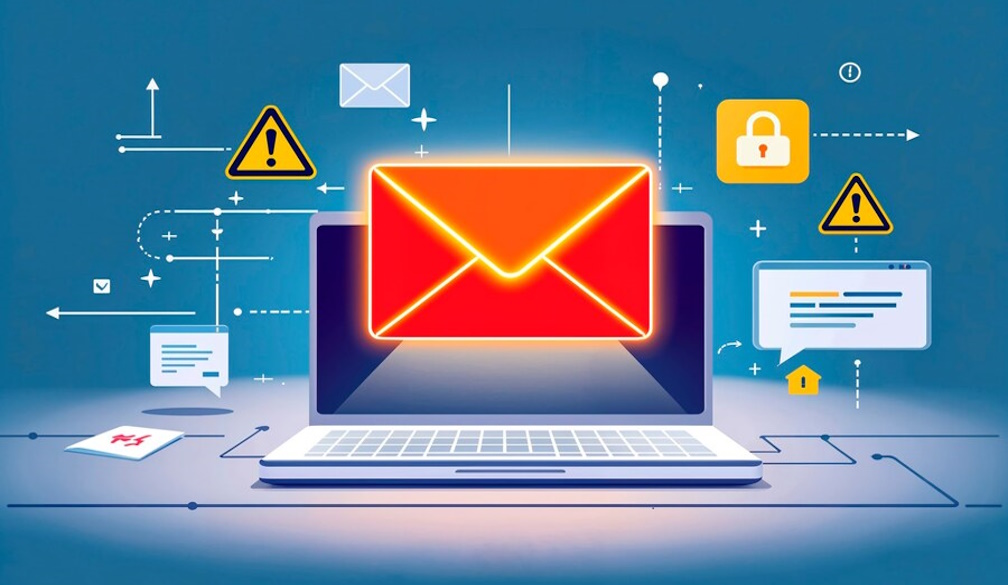SMTP 554 Errors Explained: Are Your Emails Being Rejected as Spam?

SMTP 554 is one of the biggest email delivery failures to encounter. Where an SMTP timeout error is a fleeting problem solvable through a resend, the SMTP 554 rejects transmission almost always meaning it's a hard bounce meaning the receiving mail server has rejected your request. In the vast majority of cases, the mail server didn't want your message, instead, it rejected you due to some preemptive filtering, the most common being that your sent message was marked as spam. From the perspective of the person sending mail, it's frustrating and incomprehensible to receive this status when all you're trying to do is send proper email. However, SMTP 554 isn't an arbitrary rejection. It's an inevitable consequence of aggressive anti-spam policies implemented by all inbox service providers to maintain a degree of control over their users against unwanted and inappropriate material. Understanding why it occurs is the first step to making it right.
Why Emails Trigger SMTP 554 Responses
There are various reasons your message may have resulted in a 554 rejection. The first is email content. Do you contain any known spam triggers? This ranges from iffy subject lines and sales-heavy copy to spammy links and even iffy HTML. Also, your sending history matters. For example, if you're missing SPF, DKIM, or DMARC records, your email might not be authenticated by the receiving server. Furthermore, if you're sending from an IP address or domain that has a track record of complaints, you might still get a SMTP error 554.500 even if your content is appropriate.
The Importance of Reviewing Bounce Message Details
As far as troubleshooting a 554 error, your best friend is the bounce message. While “554 Transaction Failed” doesn't say much, most servers that do send these messages will provide extra verbiage detailing why they couldn't send the email. You might see things like “message content rejected,” “policy reasons,” “blacklisted IP,” or “suspected spam.” This is valuable information to note, as it highlights whether there's an issue with your content, your sending setup, or your sending reputation. Sometimes the bounce message even provides a URL for you to check blocklist status or to dispute the transaction failure.
How to Resolve SMTP 554 Errors Effectively
Now that you've started troubleshooting a 554 error, ensure your email authentication is correct. Verify SPF, DKIM, and DMARC records are in place and corresponding with the sending domain. These are protocols that verify who you say you are, and the more reputable you are, the more credibility you earn with recipient mail servers when it comes to sender reputability. Then, check if your sending IP/domain reputation exists in good standing via SenderScore, Talos Intelligence, or MXToolbox. If you find yourself on a blacklist, there are prescribed steps to getting delisted along with changing your sending standards so this doesn't happen again. After all, you don't want your legitimate email to be marked as spam by someone else.
After authentication and sender reputation are established, focus on your content. Use a spam testing tool like Mail-Tester or Litmus to run your email content through a filter to check for anything from bad language to broken links to HTML issues that could land in the spam filter. Strip out any badly perceived verbiage, or things that could be misconstrued as too pushy to send clearer signals that you're not out here spamming people. If the 554 bounce-back message signifies policy filtering by a particular ISP, see if you can reach out to that provider's postmaster or abuse contact to explain your situation. You never know they might be able to lend a hand with better insight or whitelisting.
Rebuilding Trust After a 554 Block
Now that you've made changes to reinstate your ability to send where SMTP 554 would bounce content or design-related issues, authentication failures, or de-listing solutions you want to slowly and carefully build up your sender score once more. Returning to the prior volume of sending at an anticipated rate could harm you since ISP and filters still have their eyes on your email activities, barely trusted at the moment. For example, if you rejected the last email sent to your whole list, don't resend it to your whole list again; instead, reduce the list and send it to an appropriate percentage of your most active and engaged list members. These consist of those who constantly open and click through your emails, and their positive engagement serves as a good indicator to inbox operators that your email is welcome and legitimate.
Monitor your open rates, bounce rates, complaints, and unsubscribes while you raise your send volume over time. These are not only a reflection of your success, but also what mailbox providers watch to determine your sender reputation and they will be the ones to either put your email in the inbox, in the spam folder, or not deliver it at all. Should you accomplish this gradual ramp-up successfully with great engagement and low complaints, you'll have a better chance during this stage. The proper gradual ramp-up can take anywhere from a few days to a week for even the largest of lists, but the patience will pay off in the end with better deliverability and less risk of receiving 554s down the line.
Alongside this step-by-step rollout, evaluate your list acquisition. One of the biggest culprits of spam complaints and delivery issues is list acquisition gone wrong. If your opt-in is unclear or a secondary thought renting emails or using pre-checked boxes you are bound to have bad subscribers who won't engage or contact you to tell you they're spam. The ideal situation is having a confirmed (double) opt-in process where subscribers must affirmatively acknowledge the wish to receive your correspondence. This creates an overwhelmingly welcomed experience, reducing complaints and helping to show mailbox providers you are running a legitimate list.
In addition, list hygiene becomes essential to your emailing practices going forward. A single campaign can destroy your domain as it can be sent to a bad or nonexistent list. A clean domain and sender reputation always begin with list hygiene. Use list-cleaning services to eliminate invalid emails, hard bounces, and people who are not engaging. Create engagement-based segmentation to suppress if not try to reengage users who have not opened or clicked on anything in a given time period (60 days, 90 days). This will protect your reputation and increase your campaign success for any targeted campaigns sent to those subscribers wanting to hear from you.
Now that you've gotten over the 554 error, it's time to reconstruct. Not only will you have reconstructed by sending less, but you will have constructed through better sending practices and continuous positive engagement. Mailbox providers want to trust you. But they need to see that you can be trusted over time. Once they are satisfied, your sender reputation will stabilize, your delivery rates will improve, your messages will land in the inbox instead of the spam folder more frequently and the 554 error occurrence will diminish drastically.
Preventing Future 554 Errors with Best Practices
Email deliverability is an art of prevention. The cleaner your lists, the more relevant and valuable your sends, and the continual monitoring of your reputation, the less likely you are to fall victim to a 554 rejection. Make it a standard practice to test emails before launching a large campaign. If you notice complaints, bounces, or unsubscribes skyrocket, cease sending and investigate ideally, avoid sending in the first place if you can detect a problem.
Compliance and additional prevention come from using email service providers that follow industry standards and have internal options for boosting deliverability. These keep you reputable and in the loop. For example, most email service providers will automatically spam-test your emails, handle bounces, and possess analytics to troubleshoot before the entire list is negatively impacted.
Knowing When to Seek Expert Help
Yet there are times when the SMTP 554 error continues to harass you and there's nothing you can do to avoid it. This often happens when your domain or IP has a sordid past of poor sending history, unresolved complaints, and/or excessive blacklistings. Suppose basic troubleshooting does not resolve the SMTP error message, and you have a history of past problems. In that case, you may need to enlist the help of a deliverability professional. When you're at the end of your rope with something that you can't solve, it becomes more than a marketing problem, it may irritate your customers and tarnish your business reputation.
Deliverability experts understand the issues that are most complex to keep your emails from entering inboxes. They can perform a comprehensive, technical review of your email ecosystem, from your SMTP settings and DNS setup to your IP reputation with third-party databases, reasons why bounces occurred, and your authenticated (SPF, DKIM, DMARC) settings and records. They can assess how your setup may trigger spam complaints, if you've adequately opted in and kept up your list, and how your engagement reports negatively affect where your emails go.
A trained expert won't solely diagnose the problem; they'll empower you with a recovery strategy that includes a new IP or subdomain, a re-segmented and re-warmed email list, a clean slate to build a reputation from the ground up, or advanced security features like BIMI or ARC. They can even be your third-party broker with the largest mailbox providers for delisting or whitelists as long as they see a good track record on your end which is challenging to achieve independently without access or technical know-how.
But should you have your mail server (or an ESP), these hurdles require trained deliverability consultants in your corner, and they save you time as they facilitate the process not only with technical solutions but also with advice for upcoming campaigns to follow the rules, achieve success and scale. Thus, while this may seem like an unnecessary expense, more often than not, it winds up saving companies money in the long run to avoid loss of revenue and other customer headaches from communications that ultimately fail to get delivered anyway.
Conclusion: 554 Errors Are Preventable with the Right Strategy
SMTP 554 errors are nothing to be scared of. They sound somewhat unmanageable, but like many SMTP errors, this is a hard bounce, meaning that feedback to one's existing approach whether it's a technical setup, sending behavior, or content needs to change. As long as one acknowledges the issue and makes the appropriate changes along with best practices for deliverability and ongoing assessment and potential adjustments there should be an unlikely chance that an email will be treated as spam. SMTP 554 errors do not indicate a technological breakdown but a potential learning opportunity to establish better rapport and communication with the target audience.

